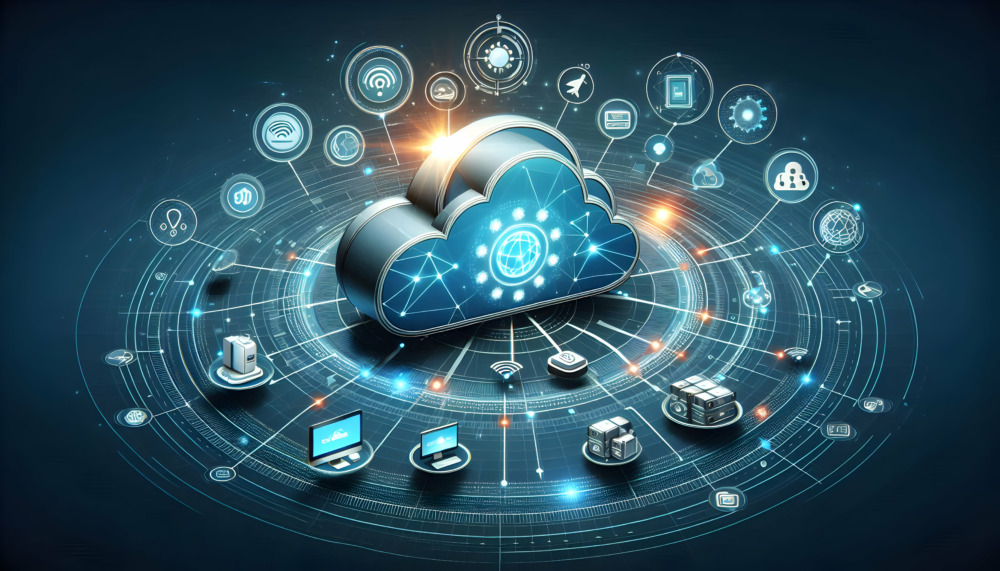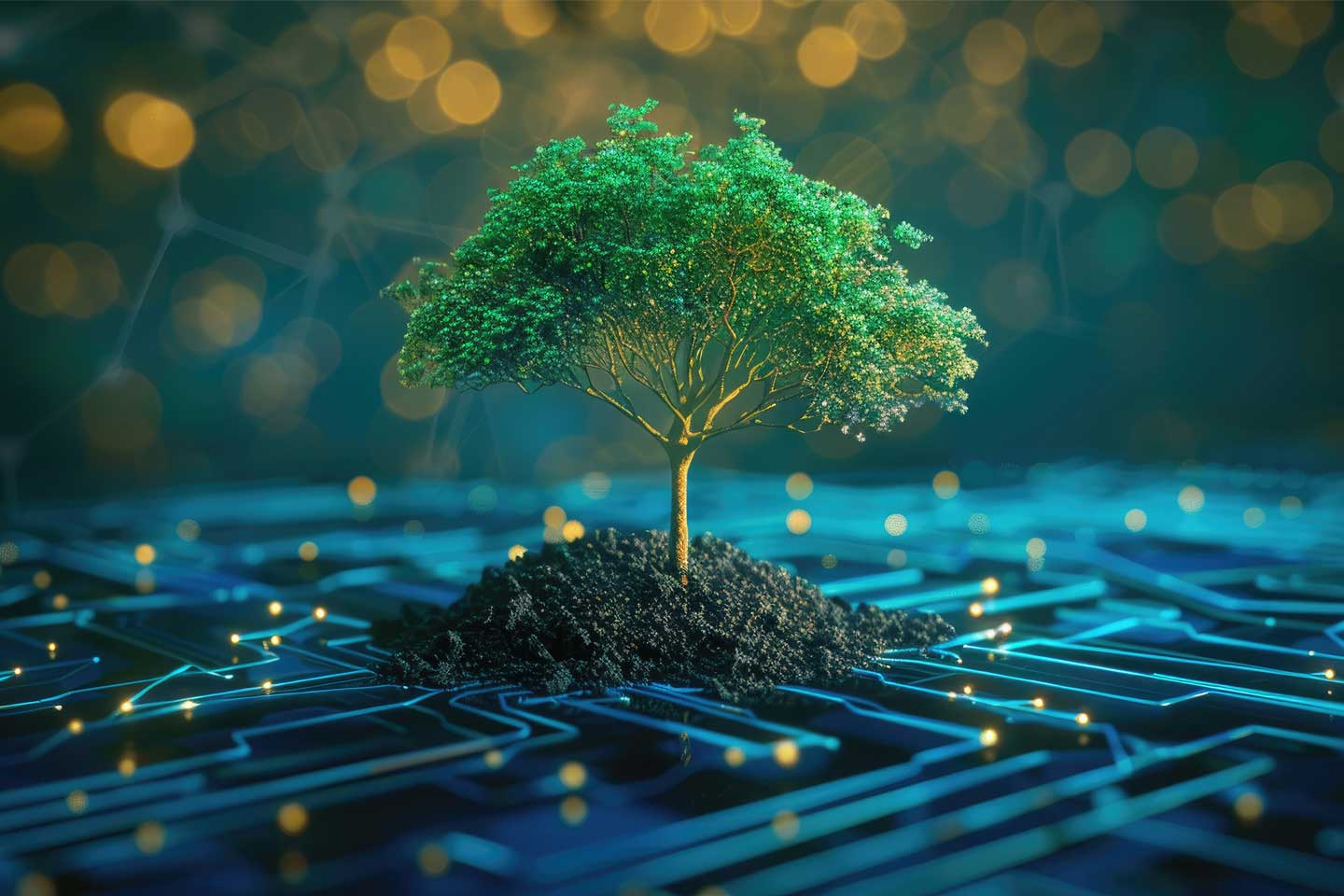
Edge Computing: Bringing Computing Closer to the Data Source – A Comprehensive Guide for Beginners
In today’s hyper-connected world, we’re generating data at an unprecedented rate. From our smartphones and smartwatches to industrial sensors, security cameras, and self-driving cars, every interaction and device is a potential data source. Traditionally, much of this data was sent to massive, centralized data centers (the "cloud") for processing. But what if waiting for data to travel back and forth isn’t an option? What if you need immediate answers, right where the data is born?
Enter Edge Computing.
Imagine you’re at a busy intersection, and you need to decide whether to cross the street. You wouldn’t send a detailed description of the traffic, the pedestrian signals, and your location to a central supercomputer thousands of miles away, wait for it to process the information, and then send back an instruction to "walk" or "wait." You’d process that information right there, instantly, with your own brain.
Edge Computing works on a similar principle: it brings the power of computation and data storage closer to the source of the data, rather than relying solely on a distant cloud or central data center.
What Exactly is Edge Computing?
At its heart, Edge Computing is a distributed computing paradigm. Think of it as creating "mini-clouds" or "micro-data centers" at the very edge of your network, often physically near where the data is being generated. These "edge devices" or "edge nodes" can be anything from a rugged server in a factory, a smart camera with built-in analytics, or even a small computer on an oil rig.
Instead of sending all raw data to a far-off cloud for processing, these edge devices can:
- Collect data from nearby sensors, devices, or users.
- Process that data locally, often filtering, analyzing, and making immediate decisions.
- Store data temporarily if needed.
- Send only essential, filtered, or summarized data back to the central cloud, if any further analysis or long-term storage is required.
This "closer to the source" approach is a game-changer for many modern applications.
Why Do We Need Edge Computing? The Problems It Solves
While Cloud Computing revolutionized how we store and process data, it has limitations, especially when dealing with the sheer volume and real-time demands of today’s connected world. Edge Computing steps in to address these challenges:
-
Latency (Speed):
- Problem: Data takes time to travel from its source to the cloud and back. This delay, known as latency, can be critical for applications requiring immediate responses. Imagine an autonomous vehicle needing to react to a sudden obstacle – a split-second delay could be catastrophic.
- Edge Solution: By processing data locally, latency is drastically reduced, enabling near-instantaneous decision-making.
-
Bandwidth Limitations & Cost:
- Problem: Sending massive amounts of raw data (e.g., continuous video streams from hundreds of cameras) to the cloud consumes enormous network bandwidth. This can be expensive, slow, and even impossible in areas with limited connectivity.
- Edge Solution: Edge devices can filter and process data, sending only the most critical information or insights to the cloud. This significantly reduces bandwidth usage and associated costs. For example, a security camera might only send an alert and a short video clip when it detects unusual activity, rather than streaming 24/7 footage.
-
Security & Privacy:
- Problem: Transmitting sensitive data over networks to a central cloud always carries security and privacy risks. The more data that travels, the more vulnerable it can be.
- Edge Solution: Processing data at the source means less sensitive information needs to leave the local network. This can enhance data privacy and reduce the attack surface for cyber threats. For instance, patient data in a hospital could be processed locally, with only anonymized aggregate data sent to the cloud.
-
Reliability & Offline Operations:
- Problem: Cloud-dependent systems require a constant, stable internet connection. If the connection drops, the system might fail entirely.
- Edge Solution: Edge devices can operate autonomously even when disconnected from the central cloud. They can continue to process data and make decisions locally, ensuring continuous operation for critical systems like manufacturing plants or remote energy grids.
-
Data Volume (The "Data Deluge"):
- Problem: The sheer volume of data generated by IoT devices is overwhelming. It’s simply not feasible or efficient to send everything to the cloud.
- Edge Solution: Edge computing provides a necessary filter, allowing organizations to manage and derive value from their data tsunami by processing it in manageable chunks closer to where it originates.
Edge Computing vs. Cloud Computing: A Complementary Relationship
It’s important to understand that Edge Computing isn’t here to replace Cloud Computing. Instead, they are complementary technologies that work best together.
-
Cloud Computing: Still excels at long-term data storage, large-scale complex analytics, machine learning model training, and applications that don’t require immediate real-time responses. Think of the cloud as the "brain" for strategic, high-level decisions, and storing vast amounts of historical knowledge.
-
Edge Computing: Specializes in real-time data processing, immediate decision-making, and handling data at its point of origin. Think of edge devices as the "reflexes" and "local sensory organs" that react quickly to immediate situations.
Here’s a simple analogy:
Imagine a large, interconnected body.
- The brain (Cloud) makes complex decisions, stores long-term memories, and learns new skills.
- The nervous system, hands, and feet (Edge) react immediately to local stimuli (touching something hot, walking, catching a ball) and send only crucial information back to the brain.
Most modern applications will use a hybrid approach, leveraging the strengths of both edge and cloud to create powerful, efficient, and resilient systems.
How Does Edge Computing Work? (A Simplified Look)
The typical workflow in an Edge Computing environment looks something like this:
- Data Generation: Sensors, cameras, IoT devices, or other equipment at a specific location (e.g., a factory floor, a smart city intersection, a farm) generate raw data.
- Edge Device Deployment: An "edge device" or "edge gateway" is deployed close to these data sources. This device is a compact computing unit, ranging from a powerful industrial PC to a specialized server or even a microcontroller with processing capabilities.
- Local Processing: The edge device collects the raw data. It then processes this data using pre-programmed logic, AI algorithms, or machine learning models. This processing might involve:
- Filtering: Removing irrelevant noise or duplicate data.
- Aggregation: Combining data points into meaningful summaries.
- Analysis: Identifying patterns, anomalies, or specific events.
- Decision-making: Triggering actions based on the analysis (e.g., adjusting a machine setting, sending an alert).
- Action & Communication:
- Local Action: The edge device can immediately trigger an action based on its analysis (e.g., stop a conveyor belt if a defect is detected, adjust traffic lights in real-time).
- Cloud Communication (Optional/Selective): Only processed, summarized, or highly critical data is sent over the network to the central cloud for long-term storage, further advanced analytics, or global insights. Raw, bulky data often never leaves the edge.
Real-World Applications of Edge Computing
Edge Computing is not just a theoretical concept; it’s already transforming various industries:
-
Manufacturing & Industrial IoT (IIoT):
- Predictive Maintenance: Sensors on factory machines send data to edge devices, which analyze it in real-time to predict equipment failures before they happen, enabling proactive maintenance and preventing costly downtime.
- Quality Control: High-speed cameras and edge AI analyze products on an assembly line for defects instantly, removing faulty items without human intervention.
-
Autonomous Vehicles:
- Self-driving cars require immediate decisions based on vast amounts of sensor data (cameras, LiDAR, radar). Edge computing on board the vehicle processes this data in milliseconds to navigate, avoid obstacles, and ensure safety. Sending all this data to the cloud for every decision is simply not feasible.
-
Smart Cities:
- Traffic Management: Edge devices at intersections analyze real-time traffic flow, pedestrian movement, and emergency vehicle signals to dynamically adjust traffic lights and optimize congestion.
- Public Safety: Smart cameras with edge analytics can detect unusual behavior or incidents and alert authorities instantly, without sending constant video streams to a central server.
-
Healthcare:
- Remote Patient Monitoring: Wearable devices and in-home sensors process patient vital signs locally. Edge devices can detect anomalies and send immediate alerts to healthcare providers only when necessary, ensuring privacy and rapid response.
- Smart Hospitals: Edge computing can manage and optimize hospital resources, from tracking medical equipment to monitoring patient conditions within specific wards.
-
Retail:
- Inventory Management: Edge devices can track stock levels in real-time, alert staff when shelves need restocking, and identify popular products.
- Personalized Customer Experiences: In-store analytics can use edge computing to understand customer movement patterns and preferences, enabling personalized digital signage or promotions.
-
Agriculture (Precision Farming):
- Sensors in fields collect data on soil moisture, nutrient levels, and crop health. Edge devices analyze this data to precisely control irrigation systems, apply fertilizer, or detect crop diseases, optimizing yields and reducing waste.
Key Benefits of Embracing Edge Computing
Summarizing the advantages, Edge Computing offers compelling benefits for businesses and organizations:
- Ultra-Low Latency: Enables real-time responsiveness for critical applications.
- Reduced Bandwidth Costs: Less data needs to be transmitted over long distances.
- Enhanced Data Security & Privacy: Sensitive data stays local, reducing exposure.
- Improved Reliability & Resilience: Systems can function even with intermittent or no cloud connectivity.
- Cost Efficiency: Saves money on data transfer, storage, and cloud processing for raw data.
- Scalability: Allows for the deployment of compute power precisely where it’s needed, scaling out locally.
- New Business Opportunities: Powers innovative applications that were previously impossible due to technical limitations.
Challenges and Considerations for Edge Computing
While the benefits are significant, implementing Edge Computing also comes with its own set of challenges:
- Complexity: Managing and deploying a distributed network of edge devices can be more complex than managing a centralized cloud.
- Security at the Edge: Each edge device represents a potential entry point for attackers, requiring robust security measures and updates.
- Device Management: Deploying, updating, and maintaining a large number of edge devices in diverse locations can be challenging.
- Standardization: The edge computing landscape is still evolving, and a lack of universal standards can lead to interoperability issues.
- Hardware Costs: Initial investment in specialized edge hardware can be significant.
- Power Consumption: Edge devices need to be energy-efficient, especially in remote or battery-powered deployments.
The Future of Edge Computing
Edge Computing is not a fleeting trend; it’s a foundational shift in how we process data. Its growth is intrinsically linked to other major technological advancements:
- 5G Networks: The ultra-low latency and high bandwidth of 5G will further accelerate the adoption of edge computing, enabling even more sophisticated real-time applications.
- Artificial Intelligence (AI) at the Edge: Deploying AI and Machine Learning models directly on edge devices (Edge AI) will make smart devices even smarter, allowing them to learn and adapt locally without constant cloud interaction.
- IoT Proliferation: As more devices become "smart" and connected, the need for localized processing will only intensify.
In essence, Edge Computing is becoming the essential backbone for the next generation of smart, autonomous, and highly responsive technologies. It empowers us to derive immediate insights and take action right where the data is created, unlocking unprecedented levels of efficiency, safety, and innovation across every industry.



Post Comment